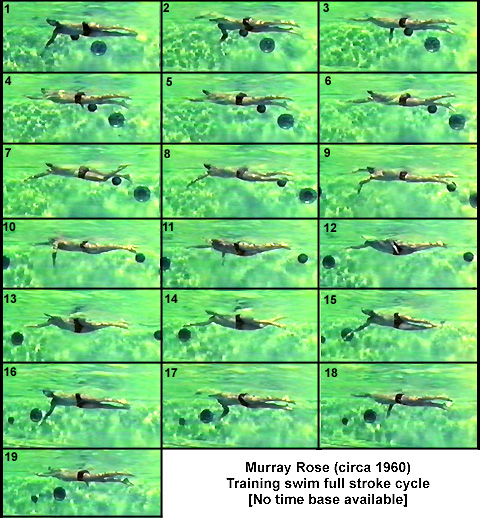HOW CHAMPIONS DO IT
Researched, produced, and prepared by Brent S. Rushall,
Ph.D., R.Psy.

THE TRAINING STROKE OF MURRAY ROSE (Circa 1960)
This record was made by Forbes Carlile at the 1960 Olympic Games
Swimming Team training camp in Queensland, Australia.
Murray Rose has been mythologized as having had a "classic"
stroke which has features worthy of emulation. It is popularly
considered to be the forerunner of "modern" crawl-stroke
technique as well as exhibiting several innovations.
Notable Features
- The hips rotate in unison with the shoulders.
- A classic two-beat kick is exhibited. Each kick occurs to
counterbalance the large vertical component of the "repositioning"
movement of the arm after entry. The vertical components of the
arm action and kick cancel each other which results in the hips
remaining high and the body level.
- Each arm demonstrates a long glide. There is a considerable
period before propulsive/accelerational force is generated and
the other arm has completed its propulsion. This inertial lag
would cause the swimmer to slow considerably between force applications.
- There is a notable "elbow-up" position in the left
arm (Frame #9). This initiates a period where the hand and forearm
move in unison to produce drag forces. This is a significant feature.
- The right arm (Frames #12 to #17) exhibits a "dropped"
elbow which could be related to the breathing action on the left
side.
- The movement patterns of each arm are totally different. It
is incorrect to depict Murray Rose as having exhibited a "particular"
stroke. Which arm is his stroke?

Return to Table of Contents for this section.




